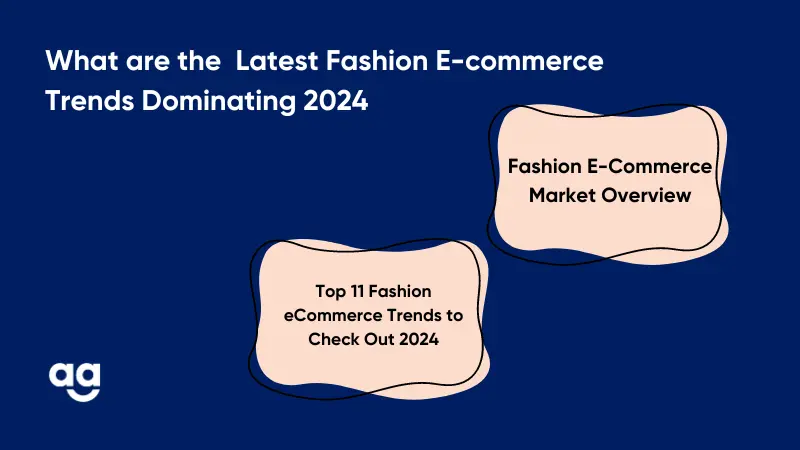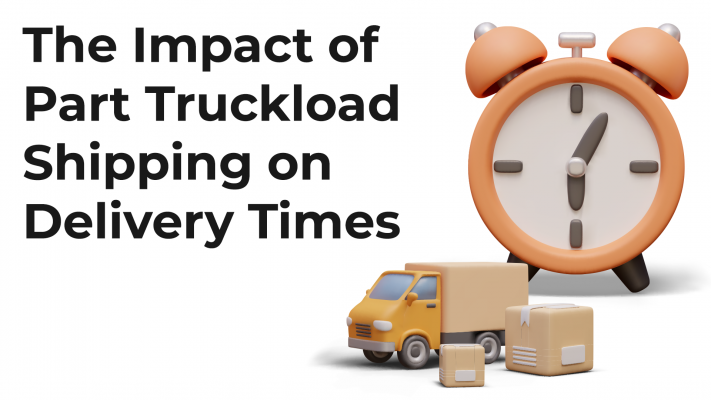Planning Pays Off: 5 Strategies to Get the Most Out of Your Delivery Speed Choice
July 17, 2024
5 min read
Introduction
In today’s digital age, convenience reigns supreme for online consumers, who relish the opportunity to effortlessly browse global fashion boutiques from the comfort of their own homes.
It is important to understand the latest fashion and e-commerce trends to thrive in this dynamic environment. Moreover, with technology advancing rapidly and consumer preferences evolving, it’s essential to stay ahead by embracing critical trends reshaping the fashion e-commerce sector.
In this post, we will explore the latest fashion e-commerce trends and their relevance in impacting consumer behavior. By analyzing these trends, you can position your business strategically to meet the evolving needs of the online consumer.
Let’s get exploring!

Fashion E-Commerce Market Overview
Based on forecasts from Statista, the e-commerce fashion market is expected to increase at a 14.2% annual rate (CAGR) between 2017 and 2025. By 2024, its estimated valuation is expected to reach $1 trillion.
With $204.9 billion sold in the US market last year, apparel, accessories, and footwear sales worldwide have been steadily rising.
For fashion firms to grow sales and redefine audience engagement, they need to keep up with important fashion ecommerce trends.
In addition to having an infrastructure that is easy to use, brands need to pay attention to the following:
- Efficient payment systems and shipping solutions.
- Established customer bases.
- More accessible avenues to establish their online presence.
- Influence of celebrity and influencer culture.
Top 11 Fashion eCommerce Trends to Check Out 2024
Follow these trends to drive consumer traffic, augment ROI, and enhance sales:
Product Filtering and Navigation
A user-friendly fashion website is imperative for apparel retailers, allowing shoppers to discover desired outfits effortlessly.
With only 16% of e-commerce brands deemed to offer satisfactory filtering and a user-friendly navigation experience, this represents a straightforward strategy to gain a competitive edge.
Luxury Fashion Dominance
The allure of designer products has prompted many customers to turn to online boutiques. This shift in consumer behavior is fueled by the desire for high-quality and exclusive items, which ultimately presents a substantial opportunity for fashion e-commerce businesses.
Adaptability in the Dynamic Fashion Market
Fashion eCommerce witnesses game-changing developments, and it is critical to stay abreast of these trends to maintain competitiveness. These fashion trends are opportunities to tap into new markets, elevate customer experiences, streamline operations, and ultimately drive increased sales for those who embrace adaptation and innovation.
Social Proof
New customers generally seek customer reviews before making a purchase. Particularly in the apparel space, reviews become a potent tool when combined with user-generated images. This allows shoppers to envision how an item will look on bodies similar to their own.
Mobile-Friendly Experience
Anticipated to reach $621 billion by 2024, mobile commerce accounts for nearly half of all e-commerce transactions, as projected by Shopify. Recognizing that 70% of consumers would rather avoid revisiting a site with poor design or layout, it becomes critical to adopt a responsive storefront that adapts to any device.
Payment Options
Online fashion retailers must offer a myriad of payment options available today to ensure diversity. While many stores exclusively offer credit or debit card payments, which are only 34% of transactions presently, 49% of payments are facilitated through digital wallet systems.
Sound Delivery Options
Fashion brands need to enhance the online shopping and shipping experience through immersive technologies. Sound delivery options can enrich the overall shopping experience. Fashion e-commerce platforms may offer interactive audio guides and use voice assistants to deliver personalized product recommendations.
Further incorporating shipping trends facilitated by effective fulfillment centers and logistics networks can ensure consumer satisfaction.
These trends can include:
- Same-Day and Next-Day Delivery
- Sustainable Shipping Practices
- Real-Time Shipment Tracking
- Subscription Services and Auto-Replenishment
- Global Expansion and Cross-Border Shipping
- Contactless Delivery and Pickup Options
Offer Personalization
There is no one-size-fits-all trend in fashion e-commerce. Fashionistas must recognize individual needs and preferences. More than 80% of customers now expect retailers to personalize their offerings. This highlights the significance of considering every customer’s individual preferences and unique requirements.
Diversity and Inclusion
In today’s socially conscious landscape, e-commerce businesses that overlook diversity and inclusion run the risk of alienating customers. Fashion brands must make it a priority to champion diversity and inclusion, not only as a moral imperative but also as a strategic approach to retaining and engaging a diverse consumer base.
Fashion E-commerce Customer Journey
Today, customers seek experiences beyond scrolling through product lists, adding items to their cart, and immediate checkout. It is important to offer engaging, exciting, and entertaining experiences that capture and retain audiences in the competitive e-commerce landscape.
Social Commerce
Leading platforms like Facebook and Instagram now enable users to purchase goods through their interfaces directly. Young consumers don’t bother visiting an e-commerce store when they can make purchases directly through the apps they frequent the most.
Conclusion
The landscape of fashion e-commerce is set to maintain its intensity throughout 2024 and beyond. This necessitates fashion brands to embrace the most effective and prevalent fashion e-commerce trends that ensure a seamless buying experience for shoppers worldwide.
The amalgamation of sustainable measures, user-friendly shipping experiences, and the use of artificial intelligence and augmented reality emerges as a transformative force within the online fashion sector.
Team up with Shipyaari if you’re on the lookout for reliable logistics solutions. We offer end-to-end shipping services to streamline your e-commerce operations and enhance customer satisfaction.
Try it for free today!
Frequently Asked Questions
Mobile commerce is booming, and a mobile-friendly site ensures a smooth shopping experience for smartphone users, who make up a significant portion of online shoppers.
Display customer reviews and user-generated content to build trust and influence potential buyers. Encouraging customers to share their experiences and photos enhances credibility.
Providing multiple payment methods like digital wallets and installment plans caters to varied consumer preferences, reduces checkout friction, and boosts conversion rates.
Personalization improves customer satisfaction and loyalty by tailoring recommendations and offers based on individual preferences, enhancing the shopping experience.
Suggested Reads
Hyperlocal Personalization: Tailoring Experiences for Local Customers
Introduction The eCommerce industry in India has witnessed a rapid growth of hyperlocal services in
Continue ReadingDec


















 Shipping
Shipping







